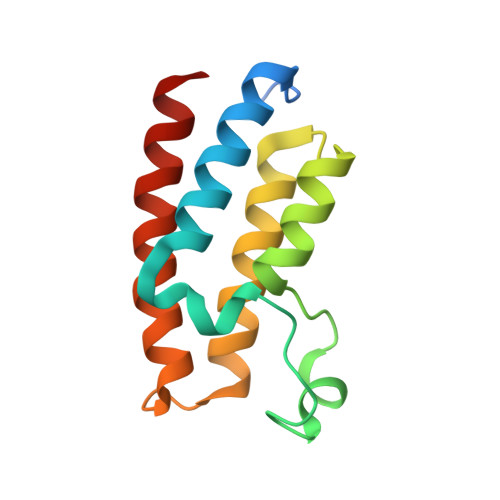New Design Rules for Developing Potent Cell-Active Inhibitors of the Nucleosome Remodeling Factor (NURF) via BPTF Bromodomain Inhibition.
Zahid, H., Buchholz, C.R., Singh, M., Ciccone, M.F., Chan, A., Nithianantham, S., Shi, K., Aihara, H., Fischer, M., Schonbrunn, E., Dos Santos, C.O., Landry, J.W., Pomerantz, W.C.K.(2021) J Med Chem 64: 13902-13917
- PubMed: 34515477
- DOI: https://doi.org/10.1021/acs.jmedchem.1c01294
- Primary Citation of Related Structures:
7LP0, 7LPK, 7LRK, 7LRO, 7RWN, 7RWO, 7RWP, 7RWQ - PubMed Abstract:
The nucleosome remodeling factor (NURF) alters chromatin accessibility through interactions with its largest subunit,the bromodomain PHD finger transcription factor BPTF. BPTF is overexpressed in several cancers and is an emerging anticancer target. Targeting the BPTF bromodomain presents a potential strategy for its inhibition and the evaluation of its functional significance; however, inhibitor development for BPTF has lagged behind those of other bromodomains. Here we describe the development of pyridazinone-based BPTF inhibitors. The lead compound, BZ1 , possesses a high potency ( K d = 6.3 nM) and >350-fold selectivity over BET bromodomains. We identify an acidic triad in the binding pocket to guide future designs. We show that our inhibitors sensitize 4T1 breast cancer cells to doxorubicin but not BPTF knockdown cells, suggesting a specificity to BPTF. Given the high potency and good physicochemical properties of these inhibitors, we anticipate that they will be useful starting points for chemical tool development to explore the biological roles of BPTF.
- Department of Chemistry, University of Minnesota, 207 Pleasant Street SE, Minneapolis, Minnesota 55455, United States.
Organizational Affiliation:



















